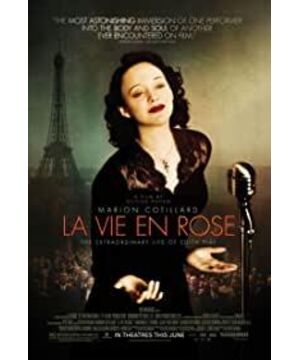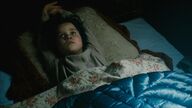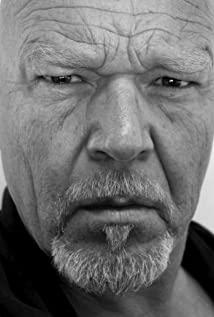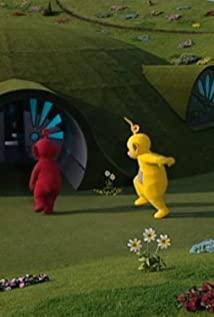There is almost no natural light source in the whole film-not to say that there is no daylight, but all the seemingly "natural light" pictures have been carefully selected and processed. The shaking light source is deliberately or inadvertently cut in from an infinite subjective angle, forming a similar The texture of the oil painting is condensed layer by layer, and the shadow is so heavy that it cannot be ignored.
When Little Piaf was sitting on the street in a slum and was bullied by other children, the green sun was covered from the back of the dirty and shabby children’s shirt. The fog was gray, and the traces of the traffic had changed from Piaf’s dull blue-purple eyes. First-rate, two and two intermittent sobbing, there is no line, it is cold.
Little Piaf pulled off the eye mask, a little white light was set against the pure sky blue background, the lens opened, from blurry to clear is a white flower blooming in the cold morning sun, blooming with high vitality. The child's face is full of fruit, and the blood is flowing under the skin.
Piaf on the hospital bed hated the sun, and the room was muddy and dark. The camera turned half a circle, but the outdoor area blocked by the curtain was white and dazzling, and some light came in unceremoniously. No matter how old she is, she has been devastated by excessive morphine like an old woman who is dying. Piaf shouted in despair, no, close it!
At the end, the aging Piaf sits leisurely on the beach and knits a sweater. This nearly two-and-a-half-minute shot is the softest and closest natural tone of all natural light scenes in the film. The setting sun is the warm red of the setting sun, the sea is light gold plated by the setting sun, the beach is slippery, and the snow-white hut lies quietly on the beach. Piaf exuded the peace and gentleness that he had almost never had before, quietly reflecting on his life that could not be turned back, and then talking to the young female reporter. ——If there are more pictures like this, there will be less tearing red and purple, and it will even give people the illusion that Piaf can be so happy. Yes, it was just an illusion of returning to the light. Soon afterwards, the chasing light in the concert hall suddenly lit up, and the strong light covered the whole stage with heavy pressure. The black costume Piaf tried his best to restrain the unwilling hands and feet, and trembled. Walking to her stage loftily, this is the real Piaf, proud with deep and hideous pride.
The above are just some of the pictures that moved me. Facing such a good film with messy style, I couldn't find a way to put these pieces back leisurely. Fortunately, when Piaf's little daughter died early in the film at the last moment, I gave up the idea of looking for a timeline-who can demand that the memory of a dying patient be clear, complete and organized? The director’s intrepid control and quiet scheduling behind the camera will be left to chew slowly in the future. You only need to witness Piaf’s excessive sorrow and joy in front of the screen that cannot be restored to the life of an ordinary person. It is indeed the same as a rose. In full bloom, decayed suddenly, and did not discard too many spines from beginning to end.
This long shot from 01:42:30 can be said to be the epitome of the overall style of the film. The chaos of "Life in the Rose" is not that the director gave up his mastery of narrative techniques and allowed him to develop it on his own, but rather delicately used the time unit unique to the lens to arrange the largest amount of information as much as possible in the narrow physical space-time.
The director chose an omnipotent perspective similar to the eye of God. The camera scans the entire space: table lamps, beds, glass wine glasses, it seems that even the tables and chairs in the hotel are unprecedentedly resplendent, because she is indulged in love. Massai descended from the sky, and the camera slowly rotated half a circle from the side to the front of Piaf, watching the upcoming tragedy like a compassionate passerby. As Piaf walked through the corridor, the hue changed from warm gold to the lack of light in the corridor. The dark red hadn't fully expanded yet. Once again, the half-turned lens took the dark blue corner back to the living room filled with daylight. The change is so rapid that the audience only feels that their heartbeat is speeding up and vaguely disturbed, but they are unable to give an accurate response. Piaf turned back and took the coffee and walked back. The black dress flashed through the black corridor to connect to the room, but it was warm and bright... Repeat this and this again, the supporting actors distributed in various spaces began to look sad. The lens is shifted, and Piaf is used as the central axis to make a circular rotation.
"You have to be strong,"
"Marseille?"
"...aircraft crash."
The camera circling to the back rushed back to the bedroom with a bewildered Piaf. There was no Marseille lying on the bed smiling, but she was blurred and happy when she woke up. Hallucinations. With the background music playing, the camera rotates back to the front and watched Piaf stiff hands and feet, crying bitterly, and stumbled all the way out. The place outside the corridor that was originally the living room has become a crowded concert hall, just like all the people on stage. At night, the crow-colored audience under the stage was waiting nervously. The huge chasing light on the stage created an atmosphere of illusion and expanded the despair infinitely: Piaf stepped on the edge of his own pain and stepped into the music barefoot.
It’s quite magical. I didn’t see where this long lens was made in one go. I cut the mirror and replaced the living room with a concert hall. I was amazed and frightened. The position of the group color, the expression, position, and movement of each actor must not make any mistakes. All of them are smooth and flowing, and they have constructed a very complicated and wonderful classic.
View more about La Vie En Rose reviews











